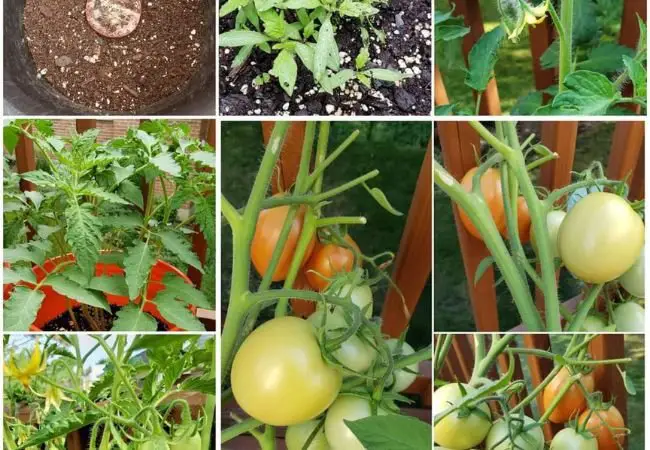Discover everything about plumcots—what they are, how they taste, their health benefits, and how to grow them at home. Try this unique hybrid fruit today with tips from Ashley Scott!

Hi, I’m Ashley Scott, and if there’s one thing I’ve learned in my 10 years of gardening, it’s that nature always has a surprise up its sleeve. Enter the plumcot—a fruit that’s as delightful as it is mysterious. If you’ve never heard of it, you’re not alone. But trust me, once you try one, you’ll wonder why it took you so long to discover this juicy gem.
In this article, I’ll take you through everything you need to know about plumcots—what they are, how they taste, their health benefits, and even how to grow your own plumcot tree at home. Whether you’re a fruit lover, a health enthusiast, or a gardener, there’s something here for you. Let’s get started!
What is a Plumcot?

A plumcot is a hybrid fruit, a cross between a plum and an apricot. It’s not quite a plum, not quite an apricot, but a perfect blend of both. The result? A juicy, sweet fruit with a hint of tartness, wrapped in smooth, velvety skin.
Plumcots were first created in the late 19th century by horticulturist Luther Burbank, who aimed to combine the best traits of plums and apricots. Today, they come in various colors—deep purples, vibrant reds, and even green plumcots—each with a unique flavor.
Wondering how plumcots differ from pluots or apriums? Here’s the breakdown:
- Plumcot: A 50/50 mix of plum and apricot.
- Pluot: More plum than apricot (usually 75% plum, 25% apricot).
- Aprium: More apricot than plum (usually 75% apricot, 25% plum).
So, if you’re curious about plumcot vs pluot or aprium vs plumcot, it’s all about the balance of flavors from their parent fruits.
How Do Plumcots Taste?
Plumcots are a treat for your taste buds—juicy, sweet, and slightly tangy. The flesh is tender, and the skin adds a subtle tartness that makes every bite exciting. Varieties like the spring satin plumcot taste rich and honey-like, while red plumcots offer a vibrant, tart kick.
I’ll never forget my first plumcot. I picked up a mottled plumcot—its speckled red and yellow skin caught my eye—at a farmer’s market. One bite, and the juice dripped everywhere. It was like summer in fruit form!
Can You Eat Plumcot Skin?
Yes! The skin of a plumcot is completely edible and adds a nice texture to the experience. Just wash the fruit well before eating, especially if it’s not organic. You can eat plumcots fresh, slice them into salads, or grill them for a sweet, caramelized twist.
Are Plumcots Healthy?
Plumcots aren’t just tasty—they’re good for you too! Here’s what they bring to the table:
- Vitamin C: Boosts your immune system.
- Vitamin A: Supports eye health.
- Fiber: Aids digestion.
- Antioxidants: Fights inflammation and protects your cells.
- Low Calories: Only 30-40 calories per fruit.
They’re a perfect snack for anyone looking to eat healthier without sacrificing flavor. For more on fruit nutrition, check out this guide from Harvard.
How to Grow a Plumcot Tree
Ready to grow your own? Here’s how:
1. Pick a Variety
Some favorites include:
- Spring Satin Plumcot: Large and sweet.
- Red Plumcot: Tart and colorful.
- Mottled Plumcot: Sweet-tart with speckled skin.
Plumcots grow best in USDA zones 5-9.
2. Planting
- When: Early spring, post-frost.
- Where: Sunny spot with well-draining soil (6-8 hours of sun).
- Soil: Slightly acidic to neutral (pH 6.0-7.0).
Need planting tips? See my guide on how to plant a fruit tree.
3. Care
- Water: Deeply, once a week.
- Fertilize: Balanced fertilizer in spring and summer.
- Prune: Late winter to shape the tree.
4. Harvest
Plumcots ripen in mid to late summer. Pick them when they’re slightly soft and colorful.
For more gardening advice, visit The Old Farmer’s Almanac.
When is Plumcot Season?
In the USA, plumcot season runs from June to August, though it can start as early as May in warmer areas. Preserve them by making jam or freezing slices for year-round enjoyment.
Where to Find Plumcots
Look for plumcots at farmer’s markets or specialty stores in summer. Search plumcot near me online for local options.
Conclusion
Plumcots are a delicious, healthy, and fun fruit to explore. Whether you’re eating them fresh or growing your own, they’re a summer must-try. Have you tasted a plumcot yet? Let me know in the comments!




